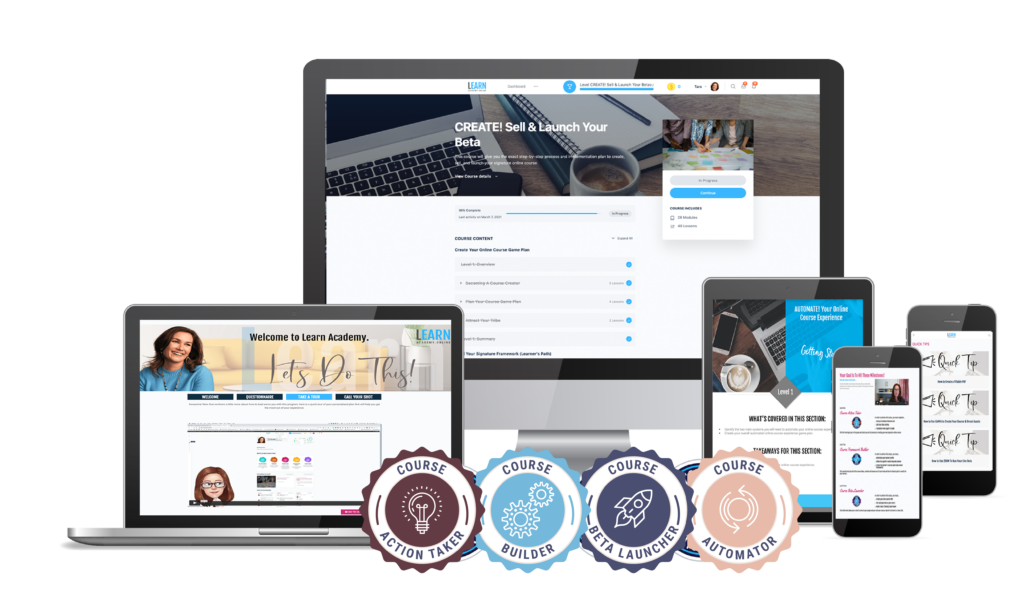The Hidden Opportunity in Your Services That Are Scalable
Every service-based business has hidden opportunities for scale – valuable processes and transformations that could serve groups instead of individuals.
The key is knowing how to spot these opportunities and package them effectively.
Think about it: If you’re solving similar problems for multiple clients, there’s likely a way to solve that problem for many people at once.
The Process Audit Method
The Process Audit helps you separate truly custom elements of your service from repeatable processes that could be standardized and scaled. Most often 80% of what you are doing is the same (or similar) for each client. So that means that only 20% is truly custom.
Conducting Your Audit:
- List Your Services
- Core offerings
- Add-on services
- Common client requests
- Break Down Delivery Steps (PRO TIP – THIS CAN BECOME YOUR STEP-BY-STEP PATH OR FRAMEWORK)
- Initial assessment
- Implementation process
- Review and refinement
- Follow-up support
- Identify Customization Points
- Must be customized
- Could be templated
- Already standardized
- Client-specific variations
Process Audit Worksheet
Create 3 columns:
- Process Step
- Current Customization Level (1-5)
- Potential for Standardization (1-5)
The Value Detective Exercise
Finding Hidden Transformations
Often, the most scalable aspects of your service aren’t what you think they are. The Value Detective Exercise helps you uncover overlooked transformations you’re already creating.
Steps to Uncover Value:
- Client Journey Mapping
- Starting point
- Transformation points
- End results
- Secondary benefits
- Transformation Analysis
- Mindset shifts
- Skill development
- Resource creation
- System implementation
- Value Pattern Recognition
- Common challenges
- Repeated solutions
- Shared obstacles
- Universal needs
Client Success Patterns
Document:
- Initial client state
- Key breakthrough moments
- Final outcomes
- Common success factors
The Scalability Scanner
What Makes an Offer Scalable?
The criteria for scalability helps you evaluate which aspects of your work are best suited for group delivery.
Scalability Criteria:
Problem Universality
- Common challenge
- Shared pain points
- Similar goals
- Consistent needs
- Solution Standardization
- Repeatable process
- Clear steps
- Measurable outcomes
- Systematic approach
- Delivery Efficiency
- Group learning potential
- Resource sharing
- Community support
- Automated elements
Evaluating Your Services
Score each aspect on:
- Universal Appeal (1-5)
- Standardization Potential (1-5)
- Delivery Efficiency (1-5)
Packaging Your Program
Program Structure Elements
Creating a compelling scalable group program requires careful attention to structure and delivery methods.
Core Components:
- Scalable Learning Framework
- Module organization
- Progress tracking
- Implementation steps
- Success metrics
- Support Systems
- Group coaching
- Resource library
- Community engagement
- Technical support
- Delivery Methods
- Live sessions
- Recorded content
- Written materials
- Interactive elements
Pricing Strategy
- Value-based pricing
- Tiered options
- Payment plans
- Early bird offers
Case Study: The $10K/Month Transformation
Meet Jessica, a business systems consultant who transformed her 1:1 service into a thriving group experience that combined the power of automated and LIVE virtual to maximize her time and attention.
Initial Service:
- Custom systems setup
- 1:1 implementation
- Ongoing support
- $2,000 per client
Transformation Process:
- Process Audit Results
- 70% of work was repeatable
- Common client challenges
- Similar implementation steps
- Program Development
- 8-week structure
- Weekly group coaching
- Training curriculum
- Implementation support
- Launch Strategy
- Beta group of 10
- Price point: $2997
- Quarterly launches
- Affiliate partners
Results:
- 30 clients per quarter
- $89,910 quarterly revenue
- 15 hours per week delivery
- Increased client success rate
Implementation Roadmap
Phase 1: Analysis (Weeks 1-2)
- Complete Process Audit
- Run Value Detective Exercise
- Use Scalability Scanner
Phase 2: Design (Weeks 3-4)
- Create program outline
- Develop content plan
- Design support systems
Phase 3: Development (Weeks 5-8)
- Create core content
- Build resource library
- Set up delivery systems
Phase 4: Launch (Weeks 9-12)
- Beta group enrollment
- Program delivery
- Feedback collection
- Refinement
Launch Strategy
Beta Launch Phase
- Content Preparation
- Invitation to warm/hot audience
- Email sequence
- Beta Invitation, Discovery Call or Application page
- Audience Warming
- Value content
- Case studies
- Testimonials
- Behind-the-scenes
- Beta Launch
- Limited spots
- Special pricing
- Extra support
- Feedback focus
Full Launch
- Marketing Calendar
- Content strategy
- Email campaign
- Strategic Social presence
- Sales Process
- Application system
- Discovery calls
- Payment processing
- Onboarding
- Delivery System
- Program platform
- Training and activities/templates
- Q&A/Flexible Coaching structure
- Community space
Ready to Scale?
Creating a successful scalable experience isn’t just about packaging your current service differently – it’s about strategically designing an experience that delivers results at scale.
Want expert guidance on transforming your services into a profitable offer? Book a Discovery Call to explore how we can help you create and launch your scalable offer within the next 90 days.







